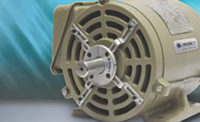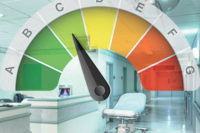On average, Americans keep their smartphones for two years before trading up to the latest model. Laptop computers have a useful life expectancy of around four years. Many buildings, though, are operating with the same control systems that were installed when the building was constructed ten or more years ago. While we do expect a building control system to have a longer life expectancy than a smartphone, it is important to keep in mind that these systems do need to be regularly updated and, in many cases, replaced periodically. Here are some of the key issues we examine when evaluating a building control system.
• Pneumatic or DDC. Control systems that are reliant on pneumatic or electromechanical controls tend to require more maintenance and are harder to optimize than those that are completely digital. Ideally, we like to upgrade pneumatic systems including thermostats and actuators to all DDC whenever feasible. This provides for better control and comfort and allows for enhanced optimization.
• Open or proprietary. The use of open protocols including BACnet and Lon Works provides numerous benefits and are broadly supported. Whenever possible, we like to see control systems upgraded so that they are supporting (and when possible, utilizing) open protocols. We also like to see control systems moved to network (IP) communications for enhanced flexibility and performance.
• Web or PC-based user interface. Older control systems generally used a PC-based user interface program, often called a thick client. Operation can generally only be done at the workstation that has the application loaded, and support often requires specific versions of an operating system. The use of a web-based user interface provides added flexibility and only needs to be updated at a single location.
• Level of supplier support. Most BAS system suppliers work hard to keep their products available for use on system expansions and for service parts for as long as possible. Still, these controllers utilize components such as processors and memory chips that are simply no longer being produced. As a result, an older control system product is often indicated as being at “end of life” beyond which new production may no longer be possible. Suppliers are pretty good about maintaining parts for a number of years past this point, but if you have a control system with parts that are no longer supportable, you should give serious consideration to upgrading or replacing the system.
FIRST STEPS
When considering upgrading or replacing an existing control system, we recommend starting with a careful examination of how well the system is working, what needs to be replaced or upgraded, and how satisfied the owner is with the existing system and the supporting supplier or contractor. In many cases, it makes sense to work with the existing supplier to upgrade the system, but it is also a good idea to carefully consider all options, including system replacement. On many projects, it has been less expensive and offered improved performance to replace an old system with a new open system.





